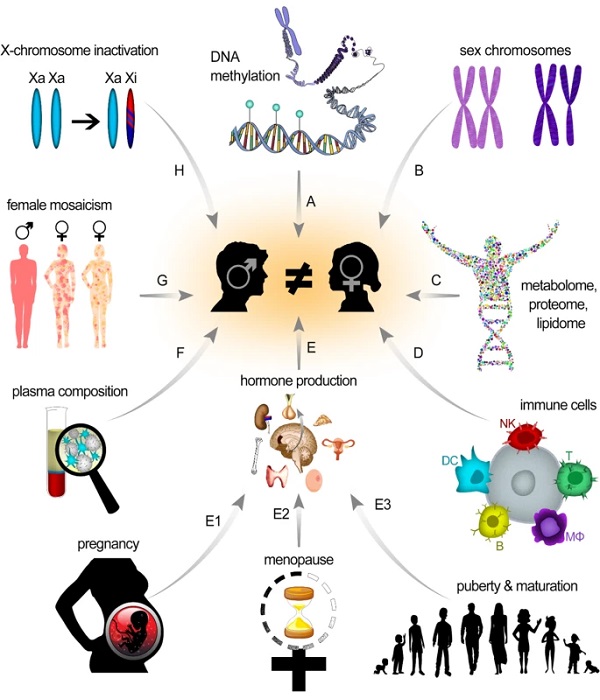Although the development of nanomedicine has shown promisingly positive results in laboratory and clinical studies, nanomedicines for the treatment of cancer still confront significant challenges. In particular, the results of a clinical trial on 75 cancer nano-drugs published in 2019 indicated that anti-cancer nanomedical products were only 14% successful in phase 3 of the trials, which implies their relative effectiveness. In addition, some nanodrug trials have shown little improvement in pharmacokinetics or drug accumulation in tumor tissues compared to the conventional drugs. These discouraging results are at least partly due to the inattention or complete lack of understanding of several prominent factors (e.g. sex) in both nano and bio systems. Therefore, identifying and achieving a profound understanding of these factors can be an important and fundamental step in improving the clinical results of nanomedical products.
A review article published in a recent issue of the journal Nature Communication examines the role of sex at the molecular and cellular levels in research in various fields of nanomedicine. This paper shows how sex-dependent physiological factors can impact on the interaction of nanoparticles with biological systems. The importance of sex as a biological variable in empirical studies has been recognized by the medical research community since 1990. However, most researchers still use only single-sex biological systems (e.g., cells, tissues, or animals) and apply the results to both sexes. With the advent of nanomedicine, the importance of sex in biomedical research has become more apparent. In recent years, the significance of sex at the cellular level has also been recognized in biomedical research. Nonetheless, it is still the case that only a small number of articles report the sex of biological systems.
One of the important obstacles in expanding the clinical application of nanoparticles is the fact that in most laboratory and clinical studies related to cellular interactions with nanomaterials, the importance of sex has not been established. This is even more conspicuous in studies of diseased cells and tissues. Recent evidence, however, suggests that sex can alter the impact of nanoparticles at the cellular level. For instance, uptake levels and pathways of nanoparticles and intracellular transmission of human mesenchymal stem cells and cancer cells are highly sex-dependent. In addition, the biomolecular / protein corona composition (a layer of biological molecules formed on the surface of nanoparticles through interactions with a biological fluid) is affected by sex-specific paracrine factors. Toxic silver nanoparticles have also been demonstrated to significantly alter bacterial species in particular types of male fish, but not in females.

Sex-dependent physiological differences. Schematic representation of male/ female differences in (A) DNA methylation, (B) sex chromosomes, (C) metabolome, lipidome, and proteome, (D) immune cells, (E) hormone production (during E1) pregnancy, E2 menopause, E3 puberty, (F) plasma composition, (G) mosaicism, and (H) X-chromosome inactivation.
As soon as different nanoparticles are placed in a biological environment, their surface is covered with a layer of proteins and other biomaterials called protein corona. This protein corona changes the initial surface of the material and gives it a novel biological nature. Human plasma is the most suitable environment for the study of protein corona, and when using plasma, the characteristics of the donor (sex, age and level of health) have a direct impact on the composition of the protein corona, an issue which has received less attention in many studies.







